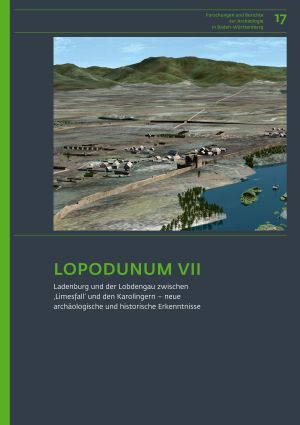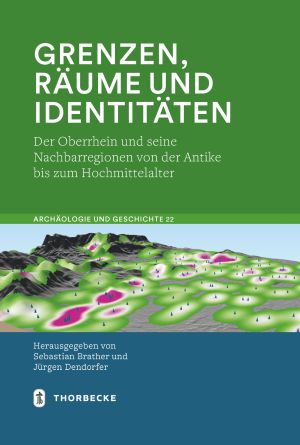Heising, Alexander
LOPODVNVM VII: Ladenburg und der Lobdengau zwischen ‚Limesfall‘ und den Karolingern
The town of Ladenburg looks back on a rich historical heritage: In the Roman era, Lopodunum was the capital of an extensive municipality, the civitas Ulpia Sueborum Nicrensium, and from the Carolingian period onward, Lobedtenburc is documented as the center of the Lobdengau. For the period in between, written sources are largely missing; all the more important are archaeological features and finds. The most important of these are presented in the volume at hand and embedded in the historical context. For instance, a group of Postumus coins from Ladenburg are presented, new interpretations of the late Roman burgus and the medieval ‘bishop's court’ are discussed, and recent findings on a Carolingian cemetery in the city area are presented. The surroundings of Ladenburg are represented by overviews on the richly equipped early medieval cemeteries of the region and on recent settlement excavations. Critical re-evaluations of written sources as well as historical-archaeological syntheses on the various possible scenarios of the 'Fall of the Limes' and on comparative regions such as the Palatinate in Late Antiquity complete the volume.
Grenzen, Räume und Identitäten: Der Oberrhein und seine Nachbarregionen von der Antike bis zum Hochmittelalter
A new, preferably unbiased view of spatial structures proves to be a decisive prerequisite for freeing research from rigid assumptions and models. This makes it possible to replace previous and necessarily highly simplified dominant narrative with complex reconstructions. Beyond large lines, spatial relationships and structures prove to be flexible and changeable. The contributions collected in this volume underline how different approaches and perspectives can be, even when they deal with the seemingly self-evident "space". In this opening beyond deterministic concepts and conceptions of space, which geography has long since completed, there are new opportunities for archaeological and historical studies.








